Bermuda grass is a popular choice for lawns due to its durability and lush appearance. However, it is susceptible to various diseases that can compromise its health and aesthetics. Understanding these diseases and their treatments is essential for maintaining a vibrant lawn. Below, we explore common Bermuda grass diseases, their symptoms, and effective treatment methods.
1. Brown Patch
Symptoms: Brown Patch manifests as circular patches of brown, dead grass, often with a darker border. These patches can range from a few inches to several feet in diameter.
Causes: This disease thrives in warm, humid conditions, particularly when nighttime temperatures remain above 60°F. Overwatering and excessive nitrogen fertilization can exacerbate the problem.
Treatment:
- Watering: Irrigate the lawn early in the morning to allow grass blades to dry throughout the day.
- Fertilization: Apply balanced fertilizers and avoid excessive nitrogen.
- Fungicides: In severe cases, apply fungicides labeled for Brown Patch control.
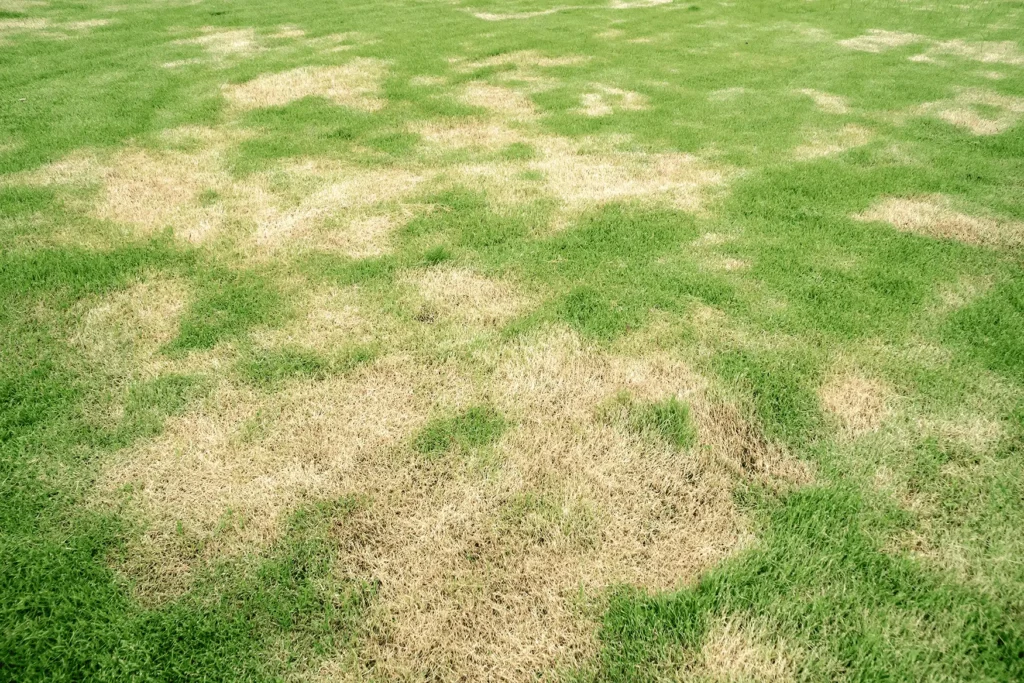
2. Dollar Spot
Symptoms: Small, silver-dollar-sized spots of straw-colored grass that may merge into larger patches. Fine webbing may be visible on grass blades in the early morning.
Causes: Dollar Spot flourishes in warm days and cool nights with high humidity. Nutrient-deficient soils and drought stress can increase susceptibility.
Treatment:
- Fertilization: Maintain adequate nitrogen levels to promote healthy growth.
- Watering: Water deeply but infrequently to encourage deep root development.
- Fungicides: Apply fungicides if the disease persists despite cultural controls.
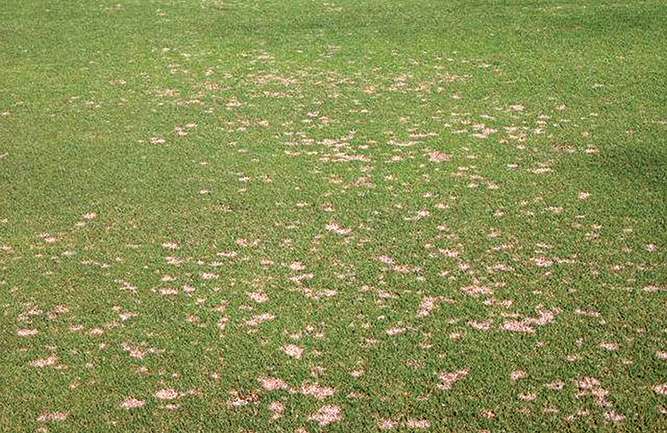
3. Leaf Spot and Melting Out
Symptoms: Dark lesions on grass blades that progress to a general thinning and browning of the turf, known as “melting out.”
Causes: Cool, moist conditions favor the development of this disease. Over-fertilization and excessive thatch can contribute to its severity.
Treatment:
- Mowing: Maintain proper mowing heights and avoid removing more than one-third of the leaf blade at a time.
- Thatch Management: Dethatch the lawn if the thatch layer exceeds 0.5 inches.
- Fungicides: Use fungicides as a last resort when cultural practices are insufficient.
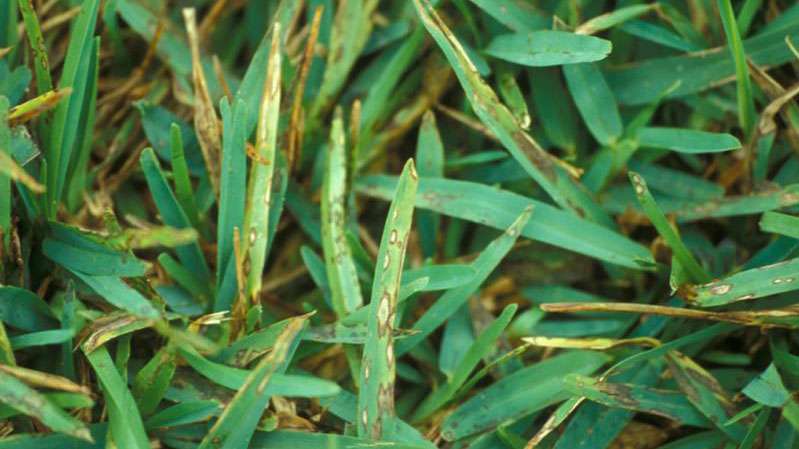
4. Rust
Symptoms: Grass blades coated with orange or rust-colored spores, leading to a reddish-brown appearance. Infected areas may thin and become weak.
Causes: Rust develops in periods of low light, high humidity, and temperatures between 65°F and 85°F. Drought stress and low fertility can predispose lawns to rust infections.
Treatment:
- Mowing: Regular mowing can remove infected leaf tissue.
- Fertilization: Apply balanced fertilizers to promote vigorous growth.
- Watering: Irrigate deeply and infrequently, ensuring the lawn dries before nightfall.
- Fungicides: Consider fungicide applications for severe infections.
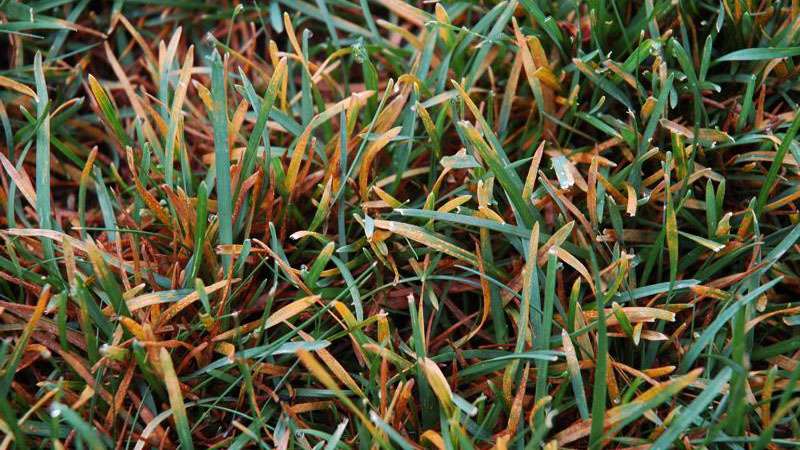
5. Spring Dead Spot
Symptoms: Circular patches of dead grass that become apparent in spring as Bermuda grass breaks dormancy. These patches may persist and enlarge over time.
Causes: Spring Dead Spot is caused by fungal pathogens that infect roots during the fall. Poor soil drainage, low potassium levels, and thatch accumulation can increase disease severity.
Treatment:
- Soil Testing: Conduct soil tests to identify nutrient deficiencies and pH imbalances.
- Fertilization: Apply potassium-rich fertilizers in late summer to enhance disease resistance.
- Aeration: Aerate the lawn to improve soil drainage and reduce compaction.
- Fungicides: Apply fungicides in the fall before the onset of dormancy, following label recommendations.
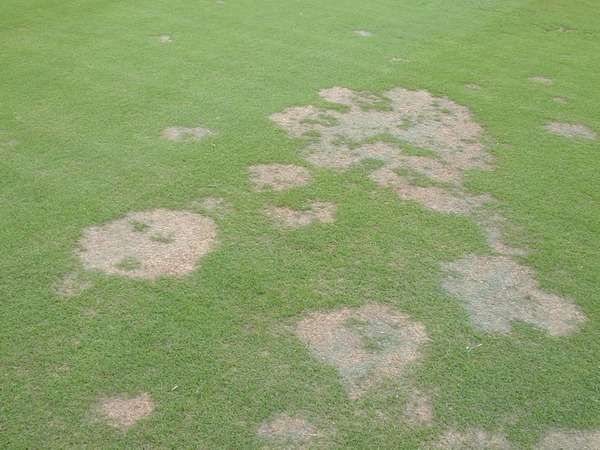
6. Fairy Ring
Symptoms: Circular rings of dark green grass, sometimes accompanied by mushrooms or a band of dead grass. The rings can vary in size and may expand over time.
Causes: Fairy Rings are caused by various soil-dwelling fungi that decompose organic matter, releasing nutrients and sometimes creating hydrophobic (water-repellent) soil conditions.
Treatment:
- Aeration: Aerate the affected area to improve water infiltration.
- Watering: Deeply water the rings to leach excess nutrients and reduce hydrophobic conditions.
- Nitrogen Application: Apply nitrogen to mask the dark green rings by promoting uniform growth.
- Fungicides: Fungicide treatments are generally ineffective against Fairy Rings; focus on cultural practices.
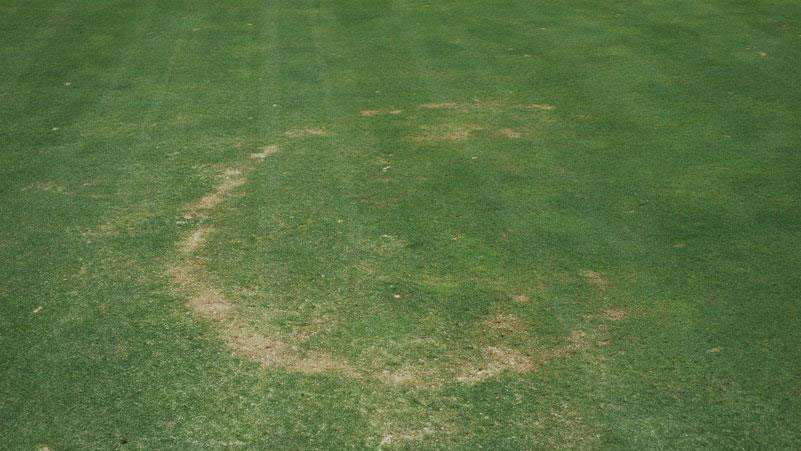
Looking for more tips? Check out the complete guide to Bermuda grass.